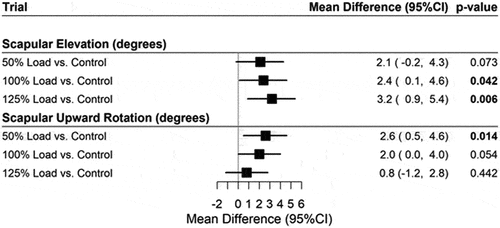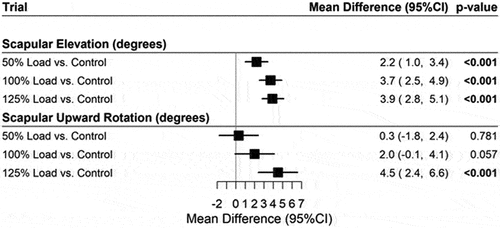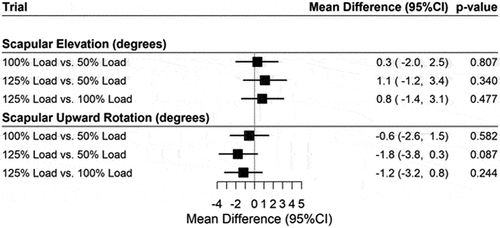Figures & data
Figure 1. Kinematic Marker placement.

Figure 2. Plot for mean differences between loaded and control (unloaded) trials during humeral ascent.

Table 1. Participant characteristics (n = 50).
Figure 3. Forest plot for mean differences between loaded trials and unloaded (control) trials during humeral descent.



